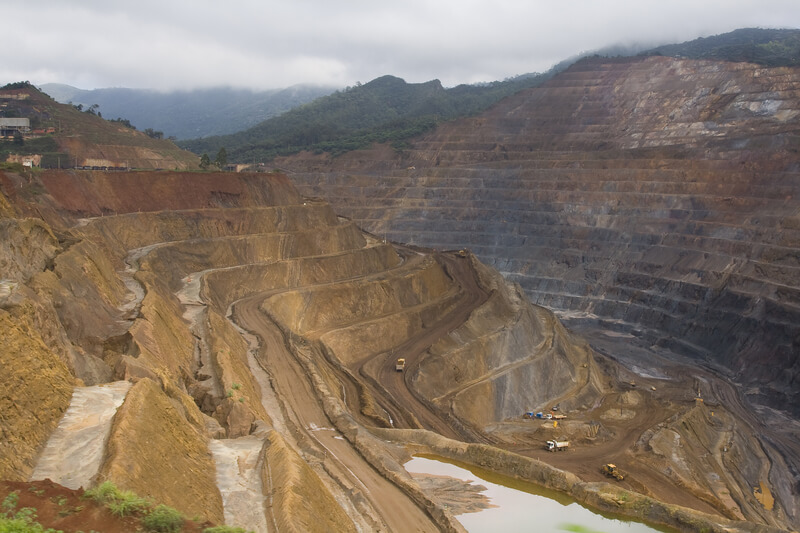
After declining for the past couple of months, it appears that copper prices are now stabilizing and even setting up for a full-blown recovery. From August to September, the copper monthly metals index (MMI) increased marginally by 1.13%, illustrating that despite recent volatility, the market was beginning to take a turn for the better. Although skeptics believe that the bearish trend will likely continue, the question becomes how low prices could go. A quick look at recent cyclical lows or, more fundamentally, determining the cash cost of the quartile of top operating mines leads to the same answer. The absolute bottom for this market appears to be near $5,000/Mt. With copper demand expected to grow exponentially over the next decade or so, a recent analyst note from Goldman Sachs suggests that copper prices will likely increase to at least $13,000/t to incentivize producers to meet the additional demand by 2030. Of course, this bodes well for mining companies that have been ramping up production like Vale (NYSE: VALE), BHP Group (NYSE: BHP), Rio Tinto (NYSE: RIO), Ivanhoe Mines (TSX:IVN) (OTCQX:IVPAF) and exploration companies, like Tier One Silver (TSXV:TSLV) (OTCQB:TSLVF), which is actively pursuing new significant copper discoveries.
Tier One Silver (TSXV:TSLV) (OTCQB:TSLVF) is an exploration and mining company that is focused on generating shareholder value by exploring its world-class gold, silver and copper assets in Peru. The company’s main projects include the flagship project, Curibaya, and their Hurricane copper-nickel project, both in Peru
Tier One’s Curibaya project is a 16,800-hectare property located in a copper porphyry belt, containing some of the country’s largest copper porphyry deposits, such as Anglo American’s Quellaveco deposit, Freeport McMoRan’s Cerro Verde deposit, and Southern Copper’s Cuajone. It is one of the first significant epithermal occurrence in this belt.
Following its maiden drill program, which returned multiple significant intercepts, Tier One recently announced that it had initiated a CSAMT geophysical survey to identify copper porphyry targets, as indications of copper porphyry style mineralization were observed in the first phase of drilling.
The survey marks a major step toward unlocking the enormous opportunity of a potential copper porphyry deposit, as it will help define the targets of the company’s next drill program.
On September 26, Tier One Silver announced channel sampling results from the Curibaya project in southern Peru. The channel sampling program was mostly done in the Cambaya target area, which is in the highest-elevation northeast part of the project. The goal was to find structures that were likely to have silver mineralization. Highlights of this program include 4.5 m of 408.2 g/t silver (Ag) and 1.48 g/t gold (Au), including 1 m of 1,768.0 g/t Ag and 6.33 g/t Au in 22CRT-080, and 2.5 m of 136.4 g/t Ag and 0.82 g/t Au, including 0.5 m of 568.0 g/t Ag and 3.37 g/t Au in 22CRT-101. Importantly, arsenic values were generally very high across the Cambaya target area. The technical team interprets this to be an indication that the target is at the top of the epithermal system and that the precious metals window exists at shallow depths.
Peter Dembicki, President, CEO and Director of Tier One Silver commented: ”The robust grades and concentration of arsenic in the channel samples at Cambaya reinforces our thesis that the precious metals system at Curibaya may be preserved at higher elevations where less erosion has taken place. This gives us further confidence in our epithermal targets while we also work to define copper porphyry targets through our ongoing CSAMT geophysical program.”
In the coming weeks, results from channel sampling in the Sambalay and Tipal corridors are expected to define additional silver targets and the Controlled-Source-Audio-Magneto-Tellurics (CSAMT) geophysical survey is expected to aid in defining \ copper porphyry targets.
During its most recent quarter, Vale reported copper production of 55,900 metric tons, which was in line with its guidance in the first quarter. While the production experienced a slight drop compared to the year-ago quarter, this was due to the effect of the Sossego SAG mill, which was under maintenance. The mill has since resumed operations, and Vale expects to ramp production capacity quickly. Furthermore, with the strong performance of its Canadian mines, the company has revised its production guidance for copper upwards to 330-355 kt.
For more information about Tier One Silver Inc. (TSXV:TSLV)(OTCQB:TSLVF), click here.
Copper Miners Are Ramping Production
BHP’s Escondida copper mine in Chile also reported record material mined as well as near record concentrator output. Despite COVID-19-related challenges and public road blockades leading to the site, the mine achieved a concentrator throughput of 367,000t/d. Escondida is the world’s biggest copper mine providing BHP with the world’s largest copper assets when added to its other copper projects. For context, BHP’s production guidance for the mine over the next five years is up to 1.2 million tons per year. The company’s Olympic Dam in South Australia also delivered an impressive performance during the fourth quarter following planned smelter maintenance.
Rio Tinto also reported a 9% increase in copper production to 126,000 tonnes compared to the same quarter of 2021, driven by higher material mined, higher grades and recoveries at its Kennecott mine. The miner further revealed that it was working with the US Forest Service at the Resolution Copper project in Arizona to advance the Final Environmental Impact Statement and complete actions necessary for the land exchange. To date, Rio Tinto and minority partner BHP have sunk over $1 billion on the project without any copper production as a result of the ongoing dispute with the Apache tribe.
Canadian miner Ivanhoe Mines recently revealed that its Kamoa copper mine in the Democratic Republic of Congo achieved a new production record in Q2 of 2022. The mine recorded production of 87,314 tonnes and milled 1.66 million ore tonnes during the period, at an average feed grade of 5.57% copper.
The Kamoa-Kakula copper project is a joint venture between Ivanhoe Mines (39.6%), Zijin Mining Group (39.6%), Crystal River Global Limited (0.8%), and the Government of the Democratic Republic of Congo (20%). Independent assessments rank it as the world’s largest, undeveloped, high-grade copper discovery.
Meanwhile, Tier One Silver is continuing to advance its Peru-based Curibaya project. The company just initiated a 35-line km Controlled-Source-Audio-Frequency Magnetotelluric (CSAMT) geophysical survey in the central portion of the project to learn more about potential copper porphyry mineralization.

Featured Image Megapixl @ Helderpc
Read more investing news on PressReach.com.Subscribe to the PressReach RSS feeds:- Featured News RSS feed
- Investing News RSS feed
- Daily Press Releases RSS feed
- Trading Tips RSS feed
- Investing Videos RSS feed
Follow PressReach on Twitter
Subscribe to us on Youtube
PressReach Disclaimer.




